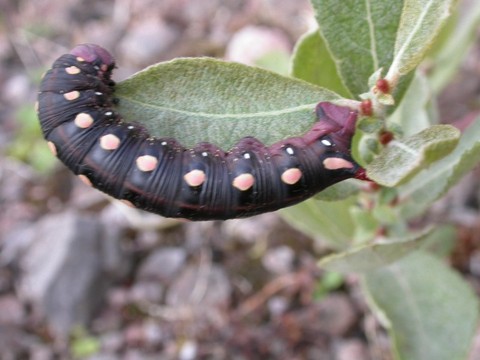See also Moth of the Week (07/08/2019)
Identification
The white stripes highlighting the forewing veins and along the top of the thorax are diagnostic.
Life cycle
Overwinters as a pupa, but without much success due to rain and cold. Larva in the British Isles can be found between July and September.
Larval foodplants
Bedstraws, Rosebay Willowherb and fuschias.
Habitat
Usually breeds in open coastal habitats, but also recorded inland where the foodplants of bedstraws, Rosebay Willowherb and fuschias grow.
History 1860-2010
The first record was of an adult found at the Crichton, Dumfries, on 7 August 1870 and added to William Lennon’s collection (New Moon or Crichton Royal Institution Literary Register, 12 October 1870). The first record for Wigtownshire was by Gordon (1913) who noted who noted a larva taken by Captain Aymer Maxwell on bedstraw near Port William in 1888. This record for VC74 is not in MOGBI. Waring et al. states that it periodically invades in large numbers as in 1888 when 65 adults and about 1000 larvae were recorded all over Britain. Buchanan (1895) listed it as occurring in Colvend parish (VC73).
There were two in 2003: one at Auchencairn in August and a larva in September at Lorg (both VC73). At the Grey Daggers meeting at Kelhead Quarry in August, 2005, a larva was found and taken away to be bred on. This emerged on 10th June 2006 at Dalry. In June 2006 an adult was found in the Galloway Forest Park.








